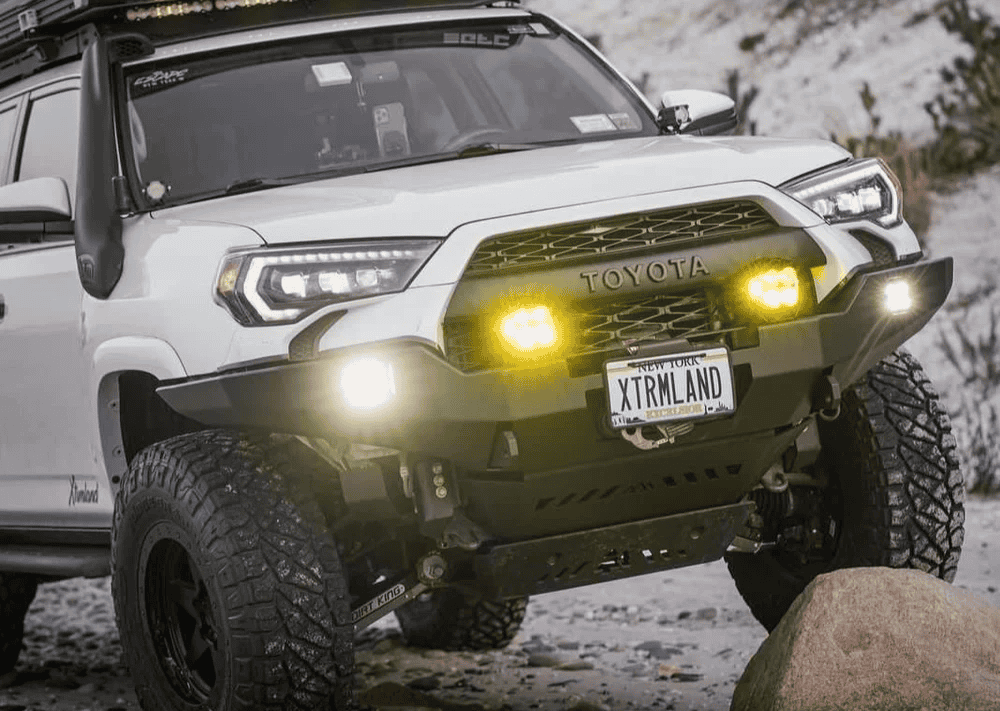Overland Vehicles

A big offroad vehicle brings generous space, long range comfort, and stout components, but size amplifies every terrain choice. Approach, breakover, and departure angles decide whether you ease over a ledge or scrape on the way in or out. Wheelbase improves stability yet raises the risk of high centering, so line choice matters more than in a shorter rig. Taller tires add clearance and soften sharp edges while increasing gear demand, brake load, and steering effort. The key is harmony between dimensions, ground clearance, and where you place the weight.
Start with simple math. Approach angle is the steepest obstacle your front can climb without contact; departure controls the rear; breakover is the belly threshold. A long wheelbase is stable at speed and on climbs but needs added clearance or careful spotting across ridges. Skid plates protect the underbody when breakover is tight. In 4x4 offroad settings, prioritize line selection that favors the high side and straightened axles before cresting to avoid diagonal hung frames.
Drivetrain choices define how power meets dirt. Low range gearing multiplies torque for slow, precise crawling and better control on descents. Locking differentials split torque evenly to both wheels on an axle when one lifts, while limited slip units bias power automatically when traction varies. Modern traction control can mimic a locker through selective braking, especially when paired with low range. Good pedal modulation and smooth steering are still the difference between a gentle climb and a wheelspin dig.
On mixed surfaces, a rear locker often gives the biggest return. Add a front locker when rock steps or deep ruts routinely unweight a front wheel. For sand and snow, a mild limited slip combined with precise throttle can feel seamless. Electronic aids shine in variable off road terrain where grip changes foot by foot. Off road and four wheel drive systems work best when you choose a mode before the obstacle and keep inputs calm.
Large rigs carry people, tools, water, fuel, and protective armor. That means spring rates, shock valving, and bump stops need to match real scale weight, not a brochure number. Choose load range tires that can handle highway speeds with weight and still air down on trail. Brakes, cooling, and gearing deserve attention if you add bigger rolling diameter. Recovery points should be frame mounted and matched with a rated hitch link, soft shackles, and a kinetic rope. Lights improve sightlines, and a reliable power system supports winches, compressors, and radios without straining the starting battery.
Carry a tire repair kit, compressor, traction boards, and a shovel as baseline gear. A synthetic line winch paired with a tree saver and gloves keeps pulls safe and predictable. For night travel, aim fog pattern lights low and wide to reveal ruts, then use a narrow spot beam to plan distant lines. Clean glass and dust control inside the cab do more for decision making than sheer lumen count.
Air is the most effective suspension change you can make on trail. Lower pressures widen the contact patch, reduce impact harshness, and help the tread wrap around sharp edges. Start conservative, then step down a few psi at a time while monitoring sidewall stability. In rocky paths, keep enough air to protect the wheel from pinch damage; in sand, drop further to float. Always re air to road safe levels before highway speeds.
Digital maps with slope shading and offline layers reveal bypasses and safer grades for an off road 4 by 4. Mount heavy items low and between the axles to lower the center of gravity and reduce sway. Keep a consistent packing plan so weight distribution does not change each trip. When crossing side hills, move slow, look ahead, and avoid sudden steering.
A big offroad vehicle can travel deep when tuned for its real mission. If you plan long distance trails with a family, prioritize cooling, brakes, and comfort as much as clearance. For rock focused travel, emphasize gearing, lockers, and underbody protection. In 4wd offroad climbs, let low range and engine braking do the work while you manage momentum and tire placement.
If you are thinking about where to start, an experienced shop can translate goals into geometry, traction, and systems that work together. Explore our overland rigs to see how platform, suspension, and power packages come together. For tailored components and integration that match your actual travel weight and routes, our custom overland upfit approach focuses on durability and serviceability. New to our shop or curious how we work with owners of large vans and trucks across the country? Learn more at why choose OZK Customs.
The right build turns a large platform into a sure footed travel partner. Whether your goal is quiet forest roads, technical rocks, or multi state routes, we can spec suspension, gearing, tires, recovery gear, lighting, and reliable power to match the way you move. Tell us about your trails, cargo, and crew, and we will shape a plan that makes your 4x4 off road days safer, smoother, and more fun.
Ready to build a big offroad vehicle that drives as good as it looks? Tell us how you travel, and our team will spec the geometry, traction, suspension, and power systems to match. Submit the form and we will craft a clear plan, timeline, and quote tailored to your routes and gear.
ADDRESS:
6159 E Huntsville Rd, Fayetteville, AR 72701
PHONE:
(479) 326-9200
EMAIL:
info@ozkvans.com